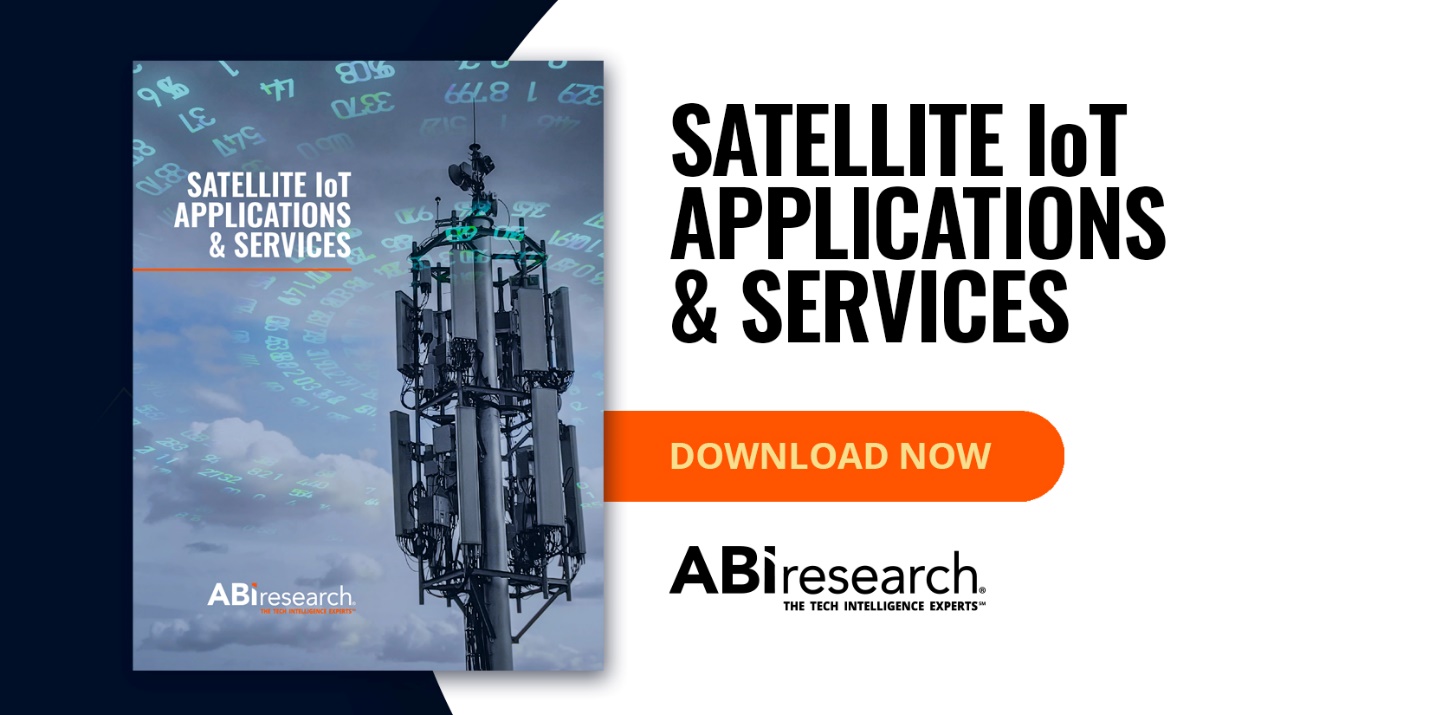Internet of Things (IoT) devices are intended to reduce the overall cost of monitoring operations by automating data collection from the field and reducing the costs and inefficiencies of physical inspections. However, the provision of connectivity for these IoT devices proves to be a challenge, particularly in rural or remote areas where it is difficult or impractical to deploy terrestrial network solutions. Satellite IoT is regarded as a key technology in providing connectivity to IoT devices outside the reach of terrestrial networks.
Registered users can unlock up to five pieces of premium content each month.
Market Overview
Below outlines our forecasts for satellite IoT in the global markets, as well as the market catalysts for IoT connectivity in satellite networks.
- ABI Research expects total satellite IoT connections to increase from 10.4 million in 2022 to 27.0 million in 2030 (at a Compound Annual Growth Rate (CAGR) of 12.7%), with satellite IoT connection revenue growing from US$2.2 billion to US$7.8 billion in the same period (at a CAGR of 16.6%).
- In particular, fleet management and Condition-Based Monitoring (CBM) applications are expected to see the highest proportion of satellite IoT connection revenue at 92.5% and 5.2%, respectively.
- The key factors driving the satellite IoT market are detailed below:
- Increased Deployment of LEO Constellations: Low Earth Orbit (LEO) satellite deployments are expected to increase significantly, with a number of Satellite Communications (SatCom) players committing to large-scale LEO constellation deployments.
- Lower Cost of Satellite Launches: Reusable rocket technology has already driven down the cost of launching satellites into orbit, with prominent players, such as SpaceX and its Falcon rockets.
- CubeSat Technology: CubeSat technology has also enabled quick and low-cost deployments of new LEO satellites as they can be built rapidly with standard off-the-shelf components. In addition, CubeSats can be launched into orbit by piggybacking on other launch missions, such as SpaceX, thereby allowing LEO satellite operators to deploy their constellations swiftly.
“IoT applications are not new and have been used by organizations for monitoring and performance analytics for decades. However, with the introduction of low-cost and low-power satellite IoT connectivity, satellite IoT solutions are expected to increasingly augment traditional terrestrial-based monitoring solutions by providing more precise and granular operational data, particularly in remote and rural areas, thereby enabling higher productivities and process efficiencies.” – Jake Saunders, Vice President of Asia-Pacific & Advisory Services at ABI Research
Key Decision Items
Decide How Value Proposition Will Be Created
Satellite operators should have a clear idea of their target market and what the requirements are. For example, nano-satellite LEO networks are suitable solutions for targeting price-sensitive customers that require low-cost, low-data consumption, and high-longevity IoT solutions. Operators should focus on driving down the cost of connectivity by leveraging economies of scale with standardized solutions. On the other hand, satellite IoT operators using Geostationary (GEO) networks could consider adding value to their solutions with increased customizability and/or higher Quality of Service (QoS) assurances.
Find Strategic Partners to Deliver an E2E Solution
Strategic alliances appear to be the preferred mode of operations, with the announcement of many partnerships between satellite operators and IoT solution providers, between satellite operators themselves, as well as between satellite operators and traditional terrestrial network operators. Satellite IoT players will need to decide between forming strategic alliances with different solution providers to deliver an End-to-End (E2E) IoT solution for customers, or to deploy their own E2E IoT solution. Among these two options, ABI Research recommends the former, as it allows the company to focus on its strengths. This was the case for Hiber when it decided not to pursue its original plan to deploy an LEO satellite constellation and to instead focus on providing satellite IoT solutions with a third-party satellite operator.
Generate Unique Value for Customers
Seamless integration of and support for popular terrestrial connectivity protocols, such as Narrowband IoT (NB-IoT), LTE-M, LoRaWAN, and Sigfox, is a common business strategy among satellite IoT market players. Satellite operators should consider how they can offer a differentiated service that provides unique value for their customers. For example, Sateliot offers satellite connectivity over the standard 5G NB-IoT protocol, thereby enabling seamless connectivity for all existing NB-IoT-enabled devices. Separately, IoT solution provider Ingenu has announced plans to offer satellite connectivity over its proprietary Random Phase Multiple Access (RPMA) technology, which the company reports to have better penetration and scalability capabilities.
Key Market Players to Watch
- Alén Space
- Apple
- Astrocast
- Avirtech
- CERFOX
- Chevron Corporation
- Commsat
- Deutsche Telekom
- Digitanimal
- Dryad Networks
- DTS, Inc.
- EchoStar Corporation
- eSAT Global
- Eutalsat
- Fossa Systems
- Globalstar
- Goanna Ag
- GOST
- Grundfos Group
- HEAD Aerospace Group
- Hiber
- hiSky
- Ingenu
- Inmarsat
- Intelsat
- Iridium Satellite
- Laguna Space
- Manx Telecom
- Myriota
- ORBCOMM
- Sateliot
- Semtech Corporation
- Sensefinity
- Sentrisense
- Shell
- Sigfox
- Skylo Technologies
- Sumitomo Construction Machinery
- Swarm Technologies
- Terex Corporation
- Thuraya
- Totum Labs
- VHF Technologies
- Wyld Networks
- Zamil Offshore
Dig Deeper for the Full Picture
Unlock the potential of the satellite IoT industry with our comprehensive market research report Satellite IoT Applications and Services. By reading the report, you will gain valuable insights into the latest trends, innovations, and transformative opportunities within this rapidly evolving sector.
Not ready for the report yet? Check out our Research Highlight How to Capitalize on the Blossoming LEO Satellite Communication Services. This content is part of ABI Research’s Satellite Communications Research Service, which provides deep technical and quantitative analysis of the SatCom market, using decades worth of SatCom research and industry relationships for rich insight and knowledge.


